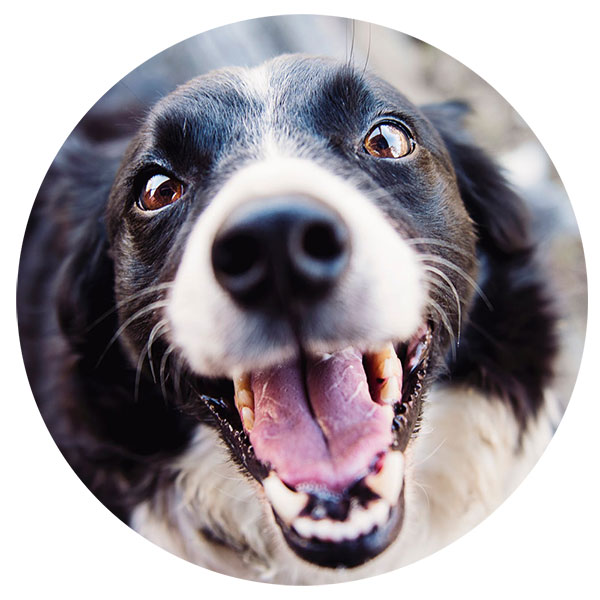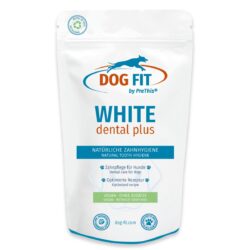Tartar and plaque in dogs
Why is dental care important for dogs?
Wild dogs and wolves clean their teeth naturally by tearing and chewing prey. Fur, tendons, and bones act like a natural toothbrush. Our domestic dogs, on the other hand, generally eat processed food—often in the form of wet or dry food—which has little abrasive effect on their teeth. This causes plaque to stick and can harden into tartar.
How does tartar develop in dogs?
Bacteria are found in dogs’ mouths that combine with food residue and saliva to form a soft plaque. If this plaque is not removed, it hardens into tartar due to mineral components in the saliva. The rough surface of the tartar, in turn, provides ideal conditions for new plaque to form – a cycle begins.
Possible Health Consequences
- Tartar is not just a cosmetic problem. It can:
- cause gum inflammation (gingivitis)
- lead to painful gum recession
- promote loosening or loss of teeth
- form bacterial colonies that, via the blood, put a strain on internal organs such as the heart, liver, or kidneys
Early detection and proper oral hygiene are therefore important to prevent health problems.
Recognizing Tartar in Dogs
Typical signs of tartar and a disturbed oral flora are:
- Yellowish-brown deposits on the teeth, especially near the gum line
- Bad breath
- Reddened or bleeding gums
- Reluctance to eat hard food
What Dog Owners Can Do
Many dog owners resort to toothbrushes, dental snacks, or toys. However, these methods have their limitations:
- Toothbrush and toothpaste: Only preventative if used thoroughly and dogs get used to them early on – but are usually unpopular with dogs.
- Dental snacks: Often unsuitable, as they may contain sugar, grains, or artificial additives – often a marketing ploy.
- Toys with a “dental care effect”: Encourage chewing, but usually do not remove hard plaque.
Regularly checking the mouth, proper feeding, and the targeted use of natural care methods can be more effective here.
Tartar removal at the veterinarian
In cases of very heavy tartar buildup, professional dental cleaning under general anesthesia is sometimes the only option. However, this is not without risk, especially for older or pre-existing dogs. In addition, costs are incurred, and new tartar can form again after just a few weeks. Preventive measures are therefore becoming increasingly important.
Nutrition and Dental Health
Feeding also plays a role: A high proportion of plasticizing fillers in food – especially in poor-quality dry food—can negatively impact dental health. A species-appropriate, natural diet and chewing on suitable, natural chews (e.g., beef hide, dried rabbit ears with fur) can contribute to oral hygiene.
A Holistic View of Oral Flora
The oral flora is part of the body’s overall microflora and is closely linked to digestion and the immune system. A balanced supply of nutrients, a healthy intestinal flora, and grooming routines help maintain balance in the mouth and keep teeth healthy in the long term.

